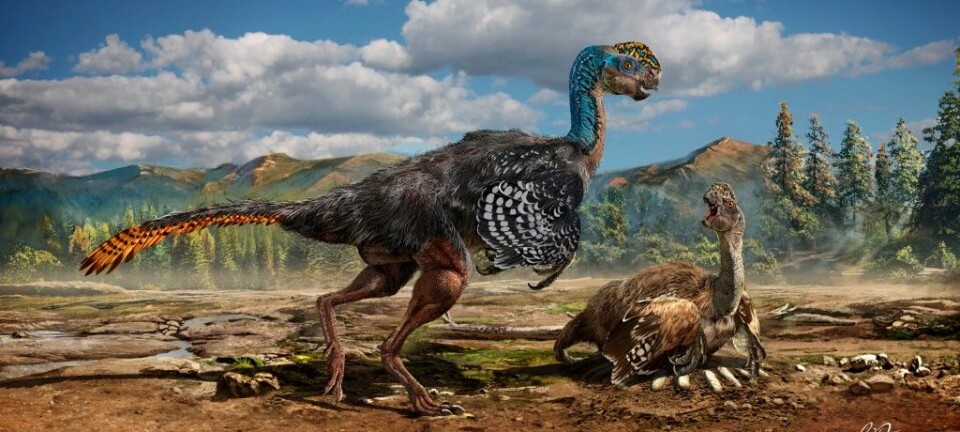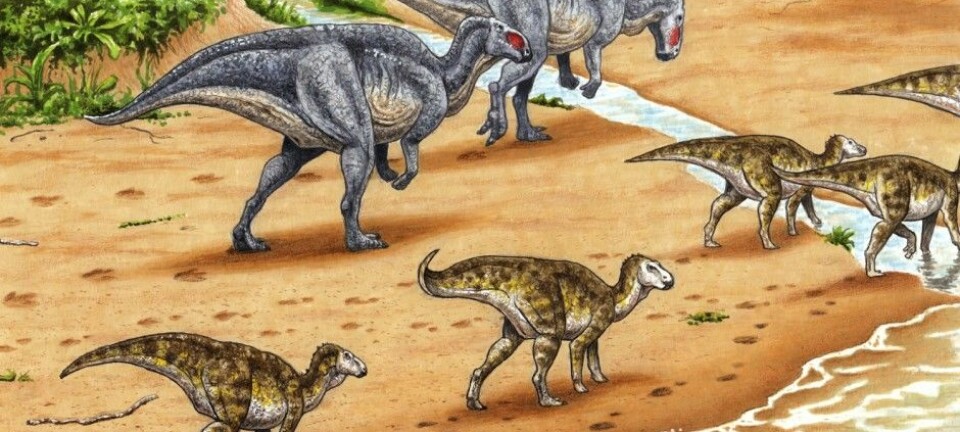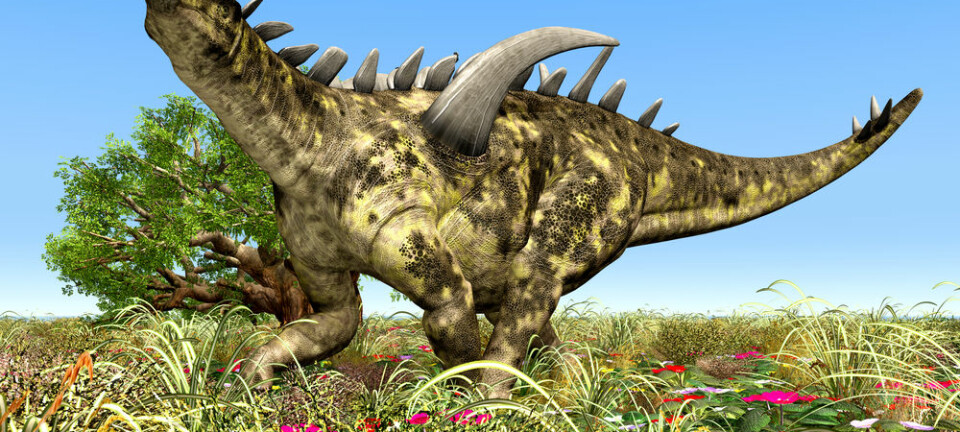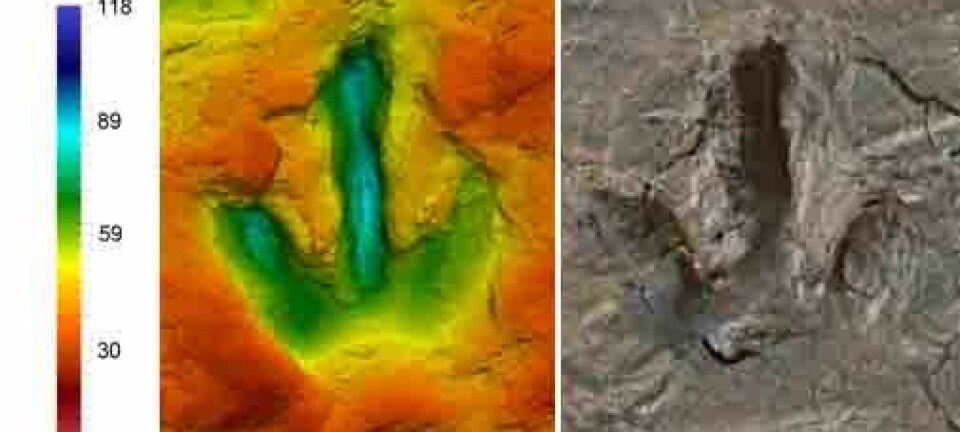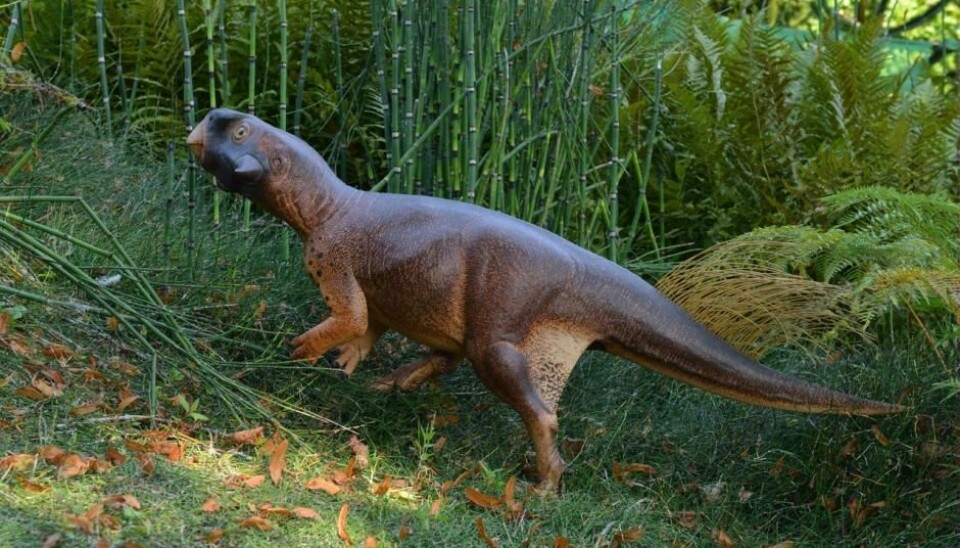
Dinosaur colours and surroundings recreated from fossils
Fossilised colours breathe new life into theories on how and where dinosaurs lived.
The brown-grey world of dinosaurs has been given some colour over the years, and now a new study has taken it a step further.
In 2007, scientists from Bristol University, UK, produced the first reconstruction of dinosaur colouring from fossilised grains of pigment. Now, they are back with a new study that reconstructs the dinosaur’s surroundings, based on their skin colouring.
“We can see the colours of the environment that the dinosaurs lived in,” says lead-author Jakob Vinther.
Vinther and colleagues studied a parrot-like dinosaur known as Psittacosaurus and discovered that its colouring was tailored for life in the forest.

The study is published in the scientific journal, Current Biology.
Parrot-like dinosaur fossil discovered with skin and hair
The Psittacosaurus lived about 120 million years ago in what is present-day China and was about the same size as a Labrador Retriever.
It had a number of eye-catching traits. Including a parrot beak, two powerful horns, and a bushy tail of long, stiff bristles.
The fossil is spectacularly well preserved. Not only are all the bones completely in place as they would have been when the animal died, but the soft parts of muscle, organs, and skin are also preserved.
It is even possible to see pigments of skin colour with the naked eye.
“There are stripes, dots, and reticular patterns on the hind legs. But the most interesting pattern is the light underside and dark topside. It looks like ‘counter-shading’,” says Vinther.
Counter-shading is a type of camouflage that plays on the brain’s ability to interpret shapes.
Read More: Scientists discover flower seeds from the dinosaur era
Environmental signature can track colours
Vinther’s colleague, Innes Cuthill from Bristol University, has studied how animals use counter-shading. They discovered that latitude and the animal’s immediate environment dictates the optimal pattern of counter-shading.
Closer to the equator, light strikes the ground at a larger angle, and shadows extend further up the animals body than at higher latitudes where sunlight is cast more horizontally.
There is also a large difference between the direct, sharp light in an open environment such as a meadow or a prairie, and the indirect, diffuse light of a forest.
This means that animal colouring changes from place to place. Animals that live in an open landscape will benefit from sharp transitions in shading from a bright underbelly to a dark back, while forest dwelling animals will benefit more diffuse and smooth colour transitions.
“When I heard about these signature patterns, I thought, ‘awesome,’ this is what we should use to find out which environment the dinosaur lived in based on its skin shading,” says Vinther.
Read More: ‘Penis worm’ is the ancestor of almost all living animals
Colleagues: An “innovative” and “pioneering” study.
Other palaeontologists are excited about the new results.
“It’s a very exciting and innovative study that shows how you can reconstruct the way a dinosaur lived and its activities to an unprecedented level of detail using exceptionally well-preserved fossils,” says Dr Jesper Milàn, a palaeontologist and curator at GeoCenter Møns Klint, Denmark.
“Hopefully this technique will be used in the future to reconstruct dinosaurs and other extinct animals in even more detail,” says Milàn.
Dr Richard Prum from Yale University, USA, is also impressed.
“It’s an exciting and pioneering study in the adaptation of colour patterns in extinct animals,” says Prum.
Video: Lead-author Jakob Vinther describes how he and his colleagues reconstructed the surrounding of the Psittacosaurus dinosaur. (Video: Cellvideoabstracts)
------------------
Read the Danish version of this study on Videnskab.dk
Translated by: Catherine Jex
